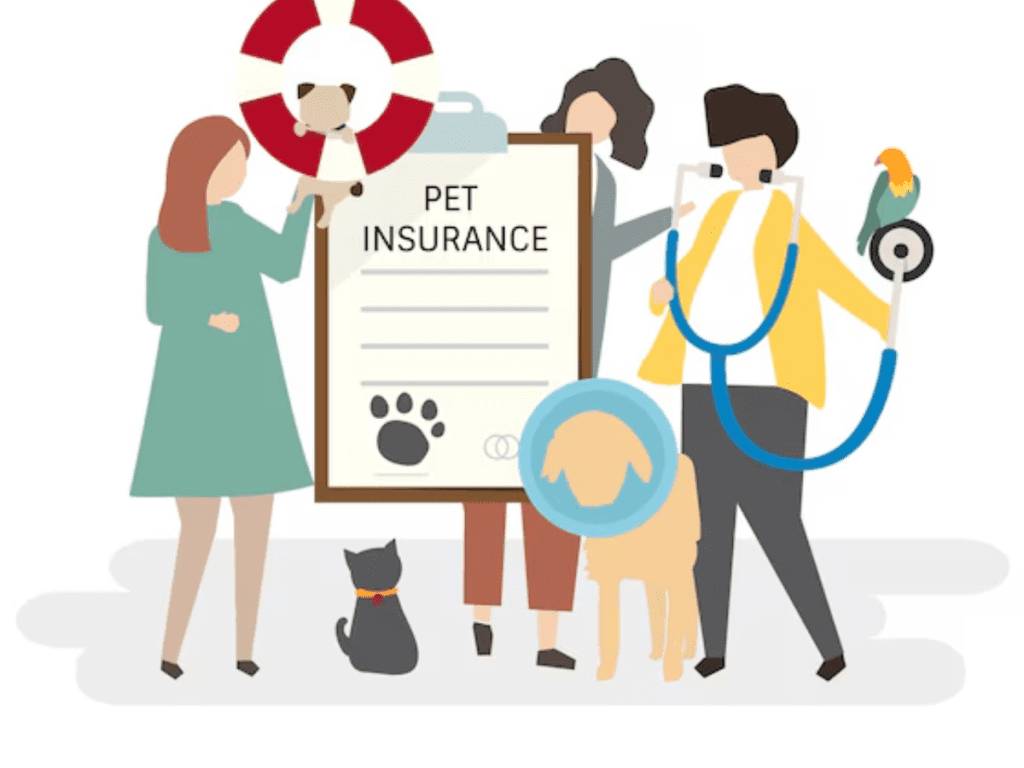Introduction
Pets are beloved members of our families, and just as humans, they have illnesses that could be quite unpredictable at times. Veterinary care can be very expensive when ill situations arise, especially emergencies, chronic conditions, or specialized treatments. Pet insurance helps pet owners account for part of those expenses. This will not be an equal provision and coverage in terms of insurance packages. Therefore, it is fundamental to know before choosing a coverage what is inside and what remains outside. We will cover some comprehensive guides discussing pet insurance covers, exclusions, factors considered when choosing one, and most importantly, maximization of pet insurance benefits in this article.
Pet insurance generally covers a variety of medical treatments and emergencies, ensuring that pet owners are financially prepared for unexpected veterinary expenses. Below are the most common types of coverage provided by pet insurance policies.
1. Accidents and Injuries
Pets are naturally curious and playful, which sometimes leads to accidents. Whether your pet is injured in a fall, gets hit by a car, suffers bite wounds from another animal, or swallows a foreign object, pet insurance can help cover medical costs such as X-rays, surgeries, and hospitalization.
2. Illnesses
Pets may contract various illnesses, ranging from mild infections to severe diseases. Most common diseases include respiratory infections, digestive disorders, skin conditions, and urinary tract infections, which are generally covered by pet insurance. Some of the chronic illnesses covered include arthritis, diabetes, or thyroid disorders.
3. Diagnostic Tests and Medications
Veterinarians use several diagnostic tools to find out what is wrong with your pet. The same insurance policies usually cater for the cost of blood tests, MRIs, X-rays, ultrasounds, and biopsies. In addition, many insurance policies provide prescribed medication directed at treatment of infections, pain, and chronic diseases. ### 4. Surgeries and Hospitalization
If your pet undergoes surgery following an accident or illness, insurance can pay for the surgery itself, including associated anesthetic and aftercare. Under most policies, the costs of hospitalisation, including over-night stays, IV fluids, and special treatments, are covered.
5. Genetic and Congenital Conditions
Some pets are more susceptible to hereditary conditions, especially purebred dogs and cats. Hereditary conditions such as hip dysplasia, heart defects, and patellar luxation can be costly to treat. Many pet insurance providers cover hereditary or congenital conditions, but check policy terms because some insurers exclude them.
6. Cancer Treatment
Cancer is one of the most common and expensive diseases in pets. Fortunately, many pet insurance policies cover cancer treatments, including chemotherapy, radiation therapy, surgery, and medications. However, insurance does not cover cancer if it is considered a pre-existing condition.
7. Alternative Therapies
Some plans also cover alternative and holistic care including acupuncture, chiropractic care, hydrotherapy, laser therapy, and physiotherapy, which are recommended by a veterinarian. These alternative therapies can be quite helpful to dogs with arthritis, mobility issues, or chronic pain. # **8. Emergency and Specialist Care
If the dog needs some high-cost treatments; for instance, veterinary neurology, cardiologists, or cancer specialists, all these may help cover these large costs associated with the highly specific services.
9. End-of-life and euthanasia services
It’s even harder and emotional to part away with the little creature; more so it feels expensive in itself. A certain number of companies cover the burial, cremation, and some euthanasi.
What Pet Insurance Doesn’t Cover
While pet insurance offers financial coverage for most of the veterinary expenditure, there are a few exceptions that pet owners should know beforehand while buying insurance.
1. Pre-existing Conditions
Most pet insurance companies do not cover pre-existing conditions, which are illnesses or injuries diagnosed before enrolling in a policy. This includes chronic conditions like diabetes, kidney disease, or previous injuries. However, some insurers may cover “curable” pre-existing conditions if the pet remains symptom-free for a specific period.
2. Routine and Preventive Care
Standard pet insurance policies do not cover routine care expenses such as:
- Annual check-ups
- Vaccinations
- Flea and tick prevention
- Heartworm medication
- Dental cleanings
- Spaying and neutering
However, some insurers offer wellness add-ons that provide coverage for these preventive treatments.
3. Breeding and Pregnancy Costs
If you intend to breed your pet, you should know that most pet insurance plans do not pay for pregnancy-related costs, delivery, or aftercare. However, there are some niche policies that include coverage for complications related to breeding. These are quite rare.
4. Cosmetic and Elective Procedures
Generally, exclusion from coverage will include procedures not considered medically necessary, such as ear cropping, tail docking, and declawing. A procedure may be covered if required for health reasons, such as tail amputation due to injury.
5. Behavioral Treatment and Training
Behavioral therapy, obedience training, and animal behaviorist consultations to address issues like aggression, anxiety, or barking are generally not included in insurance coverage. However, a few providers include behavioral treatment in their policies as an add-on.
6. Experimental Treatments and Clinical Trials
Experimental procedures, investigational drugs, and other treatments not accepted by veterinary medicine are typically excluded from coverage by insurance providers.
7. Grooming and Boarding Services
Routine grooming services including haircutting, nail trimming and bathing can be regarded as personal pet care expenses, so they are out of pocket. Any kind of pet boarding and daycare is only insured if there is an intended hospitalization.
End
With so many pet insurance options available, selecting the right policy can be challenging. Here are some key factors to consider:
1. Assess Your Pet’s Needs
Consider your pet’s breed, age, and medical history. Some breeds are prone to specific health issues, which may require more comprehensive coverage.
2. Compare Policies and Providers
Research pet insurance companies, coverage options, and customer reviews. Pay attention to:
Monthly premiums
Deductibles
Reimbursement rates
Coverage limits
3. Check for Waiting Periods
Most of the pet insurance plans have waiting periods before beginning coverage. Such waiting periods could be as little as a few days for accidents or several months for specific diseases.
4. Know Exclusions and Limitations
Read the fine print carefully to know what is covered and what isn’t. Some policies have lifetime caps on reimbursements, while others may exclude coverage for specific conditions.
5. Customize Your Plans
Some insurers allow you to add wellness plans, behavioral therapy coverage, or alternative treatments to customize your policy.
6. Claims Process
A simple and efficient claims process is essential. Choose an insurer with a quick reimbursement turnaround and transparent claim submission procedures.
Maximizing the Benefits of Pet Insurance
To make the most of your pet insurance policy, follow these tips:
Enroll Early: Getting insurance while your pet is young and healthy ensures broader coverage and prevents exclusions due to pre-existing conditions.
Keep Medical Records: Keep complete medical records to help process claims. –
Understand Reimbursement Options: You can have the vet get paid directly or be reimbursed after you pay the vet. –
Take Advantage of Preventive Care Add-ons: If available, use wellness plans that cover vaccinations and routine check-ups.
Frequently Asked Questions (FAQs) About Pet Insurance
For clarification on how pet insurance works, and to further help pet owners make the best decisions for themselves and their animals, here are some frequently asked questions with their answers.
1. Is Pet Insurance Worth It?
Yes, it can be quite helpful in emergencies or chronic diseases. Veterinary bills can quickly rise, and pet insurance ensures you can give the best care for your pet without worrying about the financial burden.
2. How Much Does Pet Insurance Cost?
The cost of pet insurance varies depending on factors such as:
The following are some details to be expected:
The pet’s breed, age, and health condition
The level of coverage selected
The insurance provider
The deductible and reimbursement rate
The cost of pet insurance ranges between $20 to $70 per month for dogs and $10 to $50 for cats. In most cases, the premiums can be more significant for older pets or breeds predisposed to certain genetic conditions.
3. What is a Deductible, and How Does It Work?
A deductible is the amount you pay out-of-pocket before your pet insurance begins to cover costs. Deductibles can be: An annual deductible means you pay a set amount once per policy year before reimbursement begins. A per-incident deductible means you pay a deductible for each separate illness or injury claim.
Choosing a higher deductible typically results in lower monthly premiums, but you’ll pay more upfront in case of a claim.
4. What is the Reimbursement Rate?
The reimbursement rate determines how much of your pet’s medical expenses the insurance company will cover after the deductible is met. Common reimbursement options include:
- 70% reimbursement: You pay 30% of the bill.
- 80% reimbursement: You pay 20% of the bill.
- 90% reimbursement: You pay 10% of the bill.
The higher the reimbursement rate, the higher the monthly premium.
5. Can I Use Any Veterinarian with Pet Insurance?
Most pet insurance plans let you go to any licensed veterinarian, including specialists and emergency clinics. Unlike human health insurance, there is usually no need to stay within a network. However, you must pay the bill upfront and then file a claim for reimbursement.
Conclusion
Pet insurance can be a good investment, helping pet owners manage veterinary expenses without financial stress. It covers accidents, illnesses, surgeries, and emergencies but does not include pre-existing conditions, routine care, or elective procedures. It is important to research and choose the right plan for your pet.
The knowledge of coverage options, exclusions, and what factors affect the premiums will guide you in an informed decision so that your pet receives the best medical care whenever needed. Regardless of whether it is a comprehensive coverage or accident-only plan, pet insurance helps to have peace of mind with financial security in the long term.

